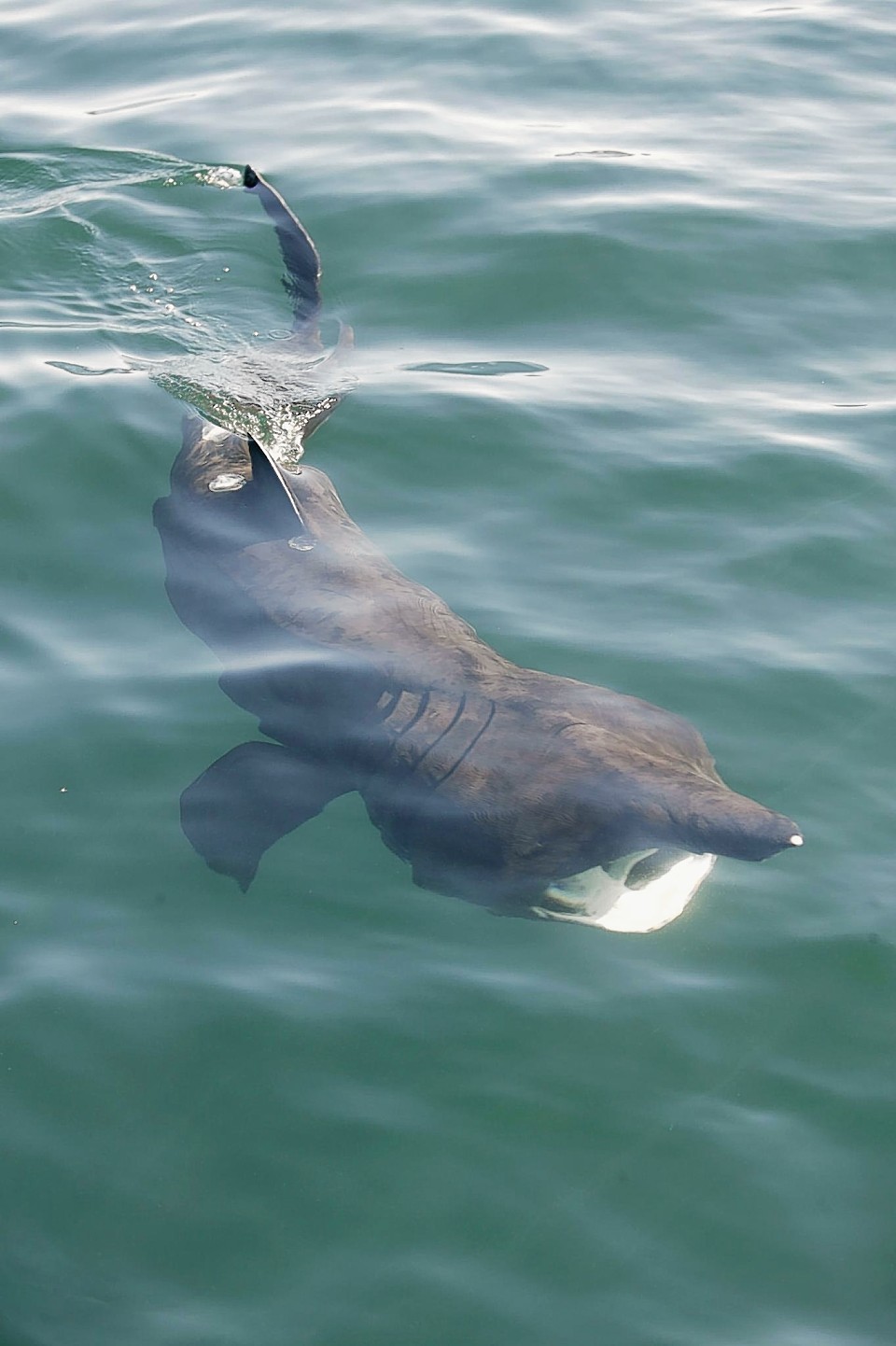Seas between the islands of Skye and Mull are highly important for basking sharks, according to a report published today (Wednesday) by Scottish Natural Heritage (SNH).
Each year large numbers of basking sharks are seen in an area of the Sea of the Hebrides which is currently being assessed as part of the Scottish Marine Protected Areas Project.
The project is a joint venture between SNH and the University of Exeter (UoE), and is the first known to use satellite tagging technology to track the near real-time movements of basking sharks.
A total of 51 sharks were tagged, 20 in summer 2012 and 31 the following year. In both years the tagged sharks spent most of July, August and September in waters around the islands of Coll and Tiree and the Hyskeir lighthouse. In these months more than 80% of the satellite transmissions received from tagged sharks came from within the Sea of the Hebrides. This is seen as further evidence that the area is a special place for these sharks.
Scientists at SNH and UoE believe the sharks return each year to feed in the area’s plankton-rich seas but the sharks’ behaviour suggests they might come for other reasons too.
Dr Suzanne Henderson from SNH, who is managing the project said: “As well as cruising around and feeding at the surface they can be seen showing courtship-like behaviours, such as jumping clear of the water, known as breaching and swimming around nose-to-tail. These social behaviours suggest that the sharks return to the area not just to feed on the plankton bloom but for other reasons too, perhaps even to find a mate.”
Information received from the tags also shows that the sharks spend these summer months at different depths, moving up and down in the water on a daily basis. A large proportion of their time is spent in shallow water less than 16ft deep, but they also spend time in deeper water down to 820ft.
Evidence suggests that the Celtic and Irish Seas are an important migration route for them. Only one shark was tracked migrating south via the west coast of Ireland, others were tracked moving south to the Isle of Man and south-west England. One was seen to head as far south as the Canary Islands.
The tags are silver grey, torpedo shaped and 6-8in long with a small antenna. If found please pick up and contact the SNH office in Oban on 0300 244 9360, or email baskingsharks@snh.gov.uk.
